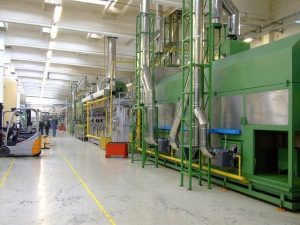
Boring is a common machining process that involves the use of a cutting tool to enlarge an existing hole in a workpiece. If a workpiece has a hole that requires enlarging, a manufacturing company may “bore” it. It’s typically performed using either a lathe or milling machine, though there specialized boring machines designed for this purpose as well. While all boring processes involve the enlargement of an existing hole, there are different types of boring, the most common of which include single pass and multi stroke.
What Is Single-Pass Boring?
Single-pass boring is a type of boring process that lives up to its namesake by using just one pass for the cutting tool. In other words, the cutting tool only goes through the workpiece’s existing hole a single time to enlarge it. According to Wikipedia, single-pass boring was originally developed for cast iron workpieces. Prior to its inception, cast iron workpieces required multiple passes to bore, resulting in subpar quality. Single-pass boring solved this problem by allowing cast iron workpieces to be bored using just one pass of the cutting tool.
The cutting tool used in single-pass boring is plated with diamonds. The diamond-plated cutting tool acts as an abrasive surface that, when forced into a workpiece’s existing hole, scraps away material from the hole’s interior walls to enlarge it.
What Is Multi-Stroke Boring?
Multi-stroke boring, on the other hand, requires multiple passes with the cutting tool. With single-pass boring, the cutting tool only makes a single pass through the workpiece’s existing hole, after which the hole is enlarged. Multi-stroke boring is longer and more methodical boring process that requires multiple passes with the cutting tool. The cutting tool moves up and down multiple times through the workpiece’s existing hole. Each of these passes helps to enlarge the hole until the desired size is achieved.
There are different types of cutting tools used for multi-stroke boring. Some are designed with sandpaper-like grit, whereas others leverage the properties of diamond dust to cut away material from a workpiece’s existing hole.
In Conclusion
Single-pass and multi-stroke boring are two common boring processes that involve the use of a cutting tool to enlarge an existing hole in a workpiece. The difference between them lies in their required numbers of passes with the cutting tool. Single-pass boring requires just one pass with the cutting tool, whereas multi-stroke boring requires multiple passes with the cutting tool. Aside from the number of passes with the cutting tool, single-pass and multi-stroke boring are pretty much the same.
